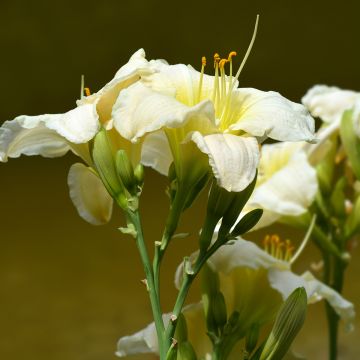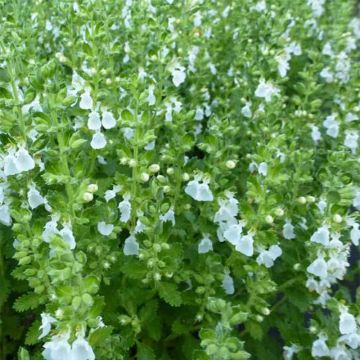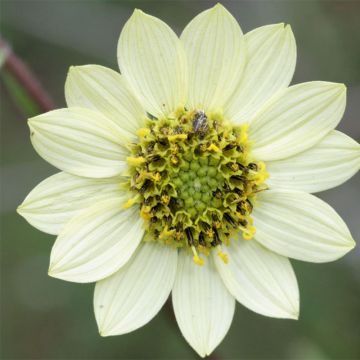

Collection of perennials for coastal borders
Collection of perennials for coastal borders
Special offer!
Receive a €20 voucher for any order over €90 (excluding delivery costs, credit notes, and plastic-free options)!
1- Add your favorite plants to your cart.
2- Once you have reached €90, confirm your order (you can even choose the delivery date!).
3- As soon as your order is shipped, you will receive an email containing your voucher code, valid for 3 months (90 days).
Your voucher is unique and can only be used once, for any order with a minimum value of €20, excluding delivery costs.
Can be combined with other current offers, non-divisible and non-refundable.
Home or relay delivery (depending on size and destination)
Schedule delivery date,
and select date in basket
This plant carries a 12 months recovery warranty
More information
We guarantee the quality of our plants for a full growing cycle, and will replace at our expense any plant that fails to recover under normal climatic and planting conditions.
Would this plant suit my garden?
Set up your Plantfit profile →
Collection items (4 plants)
Description
The collection consists of:
- x 1 Sea Thrift or Sea Pink 'Alba': a small plant forming a cushion of fine green leaves even in winter, topped with small umbels of white flowers from May to July. This perennial does not exceed 20 cm high, but it spreads on the ground. Perfect for bordering flower beds or rockeries.
- x 1 Sea Holly: a botanical species from coastal areas, forming an upright, 60 cm high tuft, with persistent, bluish-green, cut, tough, and very spiny foliage. From June to September, this thistle produces round, remarkable metallic blue flower heads.
- x 1 Sea Lavatera or Spanish Mallow: a fast-growing but short-lived woody perennial with an upright, bushy habit reaching 1.50 m high and 1 m wide. It has persistent, velvety, beautiful ash-green foliage and 4 cm cup-shaped, bicoloured flowers in white, washed with lilac pink, with a magenta centre from June to October.
- x 1 Sea Kale: a cousin of our vegetable kale that is cultivated as much for its edible young shoots as for its beauty. This plant reaches 60 cm high when flowering and 50 cm wide. It forms a tuft of superb curly, bluish-green leaves with white, cloudy, fragrant flowers between May and July.
Each of these perennial plants appreciates the sun and the conditions of the seaside. With a lesser or greater degree of resistant to frost and drought, they will thrive particularly well in sandy, rather poor soils that do not retain too much moisture in winter. Limestone is well tolerated. They can compose the basic structure of a rockery: place the Sea Thrift, Sea Holly, and Sea Kale in the front, and the Sea Lavatera in the background. To allow these three plants to fully flourish, keep a distance of 60 to 80 cm between each one. Ideally, plant them between large stones. The Sea Lavatera is the least frost-resistant (to -7 °C at its peak) and it does not live more than 5 years, but it can be easily propagated by cuttings and seeds.
Grow these coastal perennials with other species that appreciate the same environments: rockroses, lavenders, Corsican spurge, Globularia trichosantha, or Senecio mandraliscae. You can create very decorative scenes in rocky flower beds and gravel beds.
Flowering
Foliage
Plant habit
Botanical data
Spanish daisy, sea thistle, sea kale, lavatera
Cultivar or hybrid
Other Perennials A to Z
View all →Planting and care
Plant these coastal perennial plants in very well-drained, even poor and sandy soil which is moist to dry in summer, slightly chalky, neutral, or slightly acidic. They require sunlight. They are resistant to wind and sea spray and their main enemy is excess moisture. In clay soils, incorporate plenty of coarse sand and gravel to improve drainage before planting. Remove faded flowers. Prune the lavatera quite short in early spring.
Planting period
Intended location
Care
Planting & care advice
This item has not been reviewed yet - be the first to leave a review about it.
Similar products
Haven't found what you were looking for?
Hardiness is the lowest winter temperature a plant can endure without suffering serious damage or even dying. However, hardiness is affected by location (a sheltered area, such as a patio), protection (winter cover) and soil type (hardiness is improved by well-drained soil).

Photo Sharing Terms & Conditions
In order to encourage gardeners to interact and share their experiences, Promesse de fleurs offers various media enabling content to be uploaded onto its Site - in particular via the ‘Photo sharing’ module.
The User agrees to refrain from:
- Posting any content that is illegal, prejudicial, insulting, racist, inciteful to hatred, revisionist, contrary to public decency, that infringes on privacy or on the privacy rights of third parties, in particular the publicity rights of persons and goods, intellectual property rights, or the right to privacy.
- Submitting content on behalf of a third party;
- Impersonate the identity of a third party and/or publish any personal information about a third party;
In general, the User undertakes to refrain from any unethical behaviour.
All Content (in particular text, comments, files, images, photos, videos, creative works, etc.), which may be subject to property or intellectual property rights, image or other private rights, shall remain the property of the User, subject to the limited rights granted by the terms of the licence granted by Promesse de fleurs as stated below. Users are at liberty to publish or not to publish such Content on the Site, notably via the ‘Photo Sharing’ facility, and accept that this Content shall be made public and freely accessible, notably on the Internet.
Users further acknowledge, undertake to have ,and guarantee that they hold all necessary rights and permissions to publish such material on the Site, in particular with regard to the legislation in force pertaining to any privacy, property, intellectual property, image, or contractual rights, or rights of any other nature. By publishing such Content on the Site, Users acknowledge accepting full liability as publishers of the Content within the meaning of the law, and grant Promesse de fleurs, free of charge, an inclusive, worldwide licence for the said Content for the entire duration of its publication, including all reproduction, representation, up/downloading, displaying, performing, transmission, and storage rights.
Users also grant permission for their name to be linked to the Content and accept that this link may not always be made available.
By engaging in posting material, Users consent to their Content becoming automatically accessible on the Internet, in particular on other sites and/or blogs and/or web pages of the Promesse de fleurs site, including in particular social pages and the Promesse de fleurs catalogue.
Users may secure the removal of entrusted content free of charge by issuing a simple request via our contact form.
The flowering period indicated on our website applies to countries and regions located in USDA zone 8 (France, the United Kingdom, Ireland, the Netherlands, etc.)
It will vary according to where you live:
- In zones 9 to 10 (Italy, Spain, Greece, etc.), flowering will occur about 2 to 4 weeks earlier.
- In zones 6 to 7 (Germany, Poland, Slovenia, and lower mountainous regions), flowering will be delayed by 2 to 3 weeks.
- In zone 5 (Central Europe, Scandinavia), blooming will be delayed by 3 to 5 weeks.
In temperate climates, pruning of spring-flowering shrubs (forsythia, spireas, etc.) should be done just after flowering.
Pruning of summer-flowering shrubs (Indian Lilac, Perovskia, etc.) can be done in winter or spring.
In cold regions as well as with frost-sensitive plants, avoid pruning too early when severe frosts may still occur.
The planting period indicated on our website applies to countries and regions located in USDA zone 8 (France, United Kingdom, Ireland, Netherlands).
It will vary according to where you live:
- In Mediterranean zones (Marseille, Madrid, Milan, etc.), autumn and winter are the best planting periods.
- In continental zones (Strasbourg, Munich, Vienna, etc.), delay planting by 2 to 3 weeks in spring and bring it forward by 2 to 4 weeks in autumn.
- In mountainous regions (the Alps, Pyrenees, Carpathians, etc.), it is best to plant in late spring (May-June) or late summer (August-September).
The harvesting period indicated on our website applies to countries and regions in USDA zone 8 (France, England, Ireland, the Netherlands).
In colder areas (Scandinavia, Poland, Austria...) fruit and vegetable harvests are likely to be delayed by 3-4 weeks.
In warmer areas (Italy, Spain, Greece, etc.), harvesting will probably take place earlier, depending on weather conditions.
The sowing periods indicated on our website apply to countries and regions within USDA Zone 8 (France, UK, Ireland, Netherlands).
In colder areas (Scandinavia, Poland, Austria...), delay any outdoor sowing by 3-4 weeks, or sow under glass.
In warmer climes (Italy, Spain, Greece, etc.), bring outdoor sowing forward by a few weeks.
































































